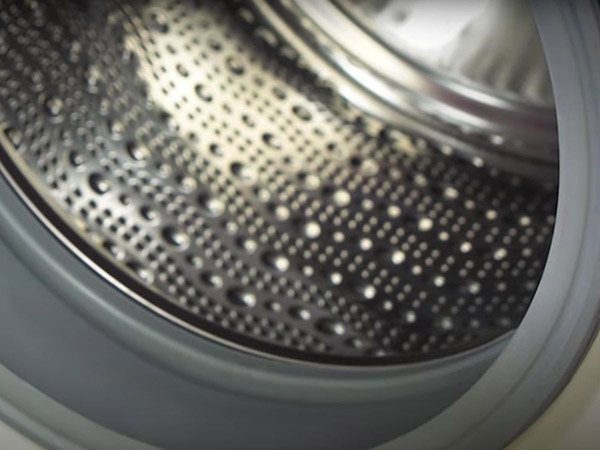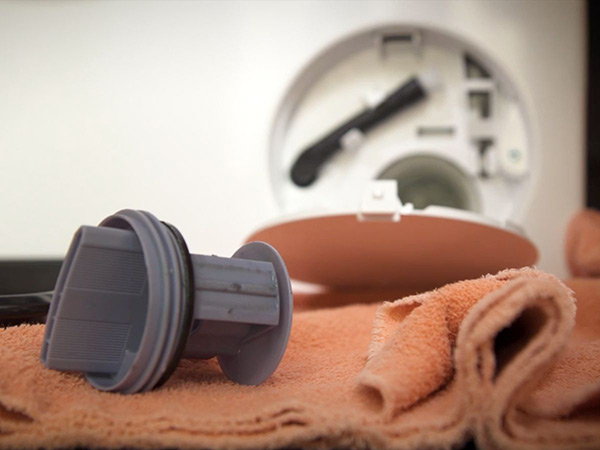How To Clean A Smelly Washing Machine – Our 6 Top Tips

A smelly washing machine is one of the most common problems that London homeowners ask us about. We often don't appreciate that our washing machines are constantly getting filled with mud, dirt, grime, body fluids, food particles and all sorts of other nasty stuff that cause bacteria and mould to thrive, which in turn can quickly become a breeding ground for bad odours.
What Causes Washing Machines To Smell?
There are several reasons why a washing machine might start to smell, but three particular culprits are bacteria, mould and fungus all of which can feed off dirt particles that linger in your machine.
In this article we wanted to share with you, our top tips on how to clean a smelly washing machine, keep it smelling fresh and how to eliminate the cause of bad odours for good.
Clean your washing machine - Our top six tips
1. Run a service wash every month
To stop nasty odours building up in the drum, run a service wash every month. This is a very hot wash without any clothes in the drum and it's what most manufacturers recommend.
We all tend to wash clothes at low temperatures, while 40 degrees is hot enough to clean most clothes, although it won't completely rid your machine of bacteria or mould. Check your manufacturer instruction manual to find out which program is best for washing clothes on.
Most individuals wash their garments at temperatures less than or equal to 40°C, which is good for the environment and lowers energy bills. Washing your clothes at these temperatures won't entirely eliminate mould and germs from your machine. As a result, you must run a hotter service wash on a regular basis to address this problem.
The only disadvantage of running a hot wash is that it will cost more. That's why, when we test a washing machine, we calculate how much energy and water they consume so that you may know how much it'll cost to run them.
2. Clean the rubber seal around the door and check for mould

Mould can grow in the rubber seal around the washing machine door, so give the seal a quick wipe, clean with a damp cloth every week.
If the mould is gound in or established as well as smelly, it could damage the seal and if this happens you'll need to call a washing machine repair professional to replace it.
If you do notice mould or mildew growing in your washing machine, it's important to take action quickly before the problem gets worse and spreads to other areas. Mould can cause damage to the seal by deteriorating it over time. It may also be what is causing your machine to smell. The best way to prevent this from happening is to check for mould on a regular basis and clean it if necessary.
3. Thoroughly clean the washing machines detergent drawer

The detergent container and the area around it can also give off bad odours. So once you've done your service wash, remove the drawer and give it all a wipe-clean, including its housing.
Clean the detergent drawer regularly to prevent your washing machine from smelling bad. The detergent compartment tends to accumulate dirt and bacteria which can cause unpleasant odours. To keep your machine clean, wash it using hot soapy water or apply a bleaching agent then scrub with a brush for between two minutes and five minutes.
Detergent drawers get mould, detergent residue, and in some cases, a black jelly-like substance builds up over time. All these can contribute to a bad smell emanating from the drawer.
So, if you want your washing machine to smell fresh and clean remember to use the correct laundry detergent and clean the drawer regularly which will help prevent unpleasant smells from building up while keeping your machine in good condition.
4. Remove and clean the lint filter

The lint filter on the machine can also Harbor nasty smells. This can usually be found at the front of the machine on the bottom right-hand side.
You'll need a shadow tray or towel to capture the water, then slip off the cover and drain any excess water using the hose.
And once you've done this, unscrew the filter and give it a good clean, it's likely to be caked in gunk and this can be very smelly. But cleaning it in some warm water should help reduce any unpleasant smells.
5. Leave the door and detergent draw open when not in use
Another tip to keep your machine odour free is to leave its door open after washing. This allows air to circulate around the drum, which helps to prevent the growth of mould and bacteria. It's also worth leaving your machines detergent drawer, partially open for the same reason.
By cleaning your washing machine regularly as well as leaving open the door and detergent draw, you can help reduce bad odours.
6. Check the washing machine waste pipe

If you've checked all of the points above and the smell still persists, they might be coming from your waste pipe.
This is where the wastewater from your machine empties and if you think there could be a blockage, try some drain and blocker liquid.
If after all of this, you can't fix your machine yourself we recommend calling a washing machine repair specialist.
Frequently Asked Questions
If you have any questions, need any further help or advice with getting rid of that bad smell from your washing machine or how to clean your washing machine correctly then contact the London washing machine repair specialists on 07984 670 782.
Did you enjoy this article?
If you did, we would appreciate it if you could share them with your friends, family or work colleagues.
Need a washing machine deep clean?
If you need a washing machine deep cleaning, repair or want to talk to us about your machine, please ring us on 07984 670782 or book an appointment via our online booking system.
If you have any questions, comments, or queries that come to mind, please get in touch with us at book@firstserveuk.co.uk or ring us on 0798 4670 782.
